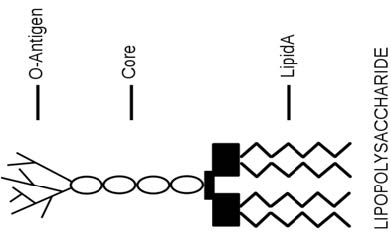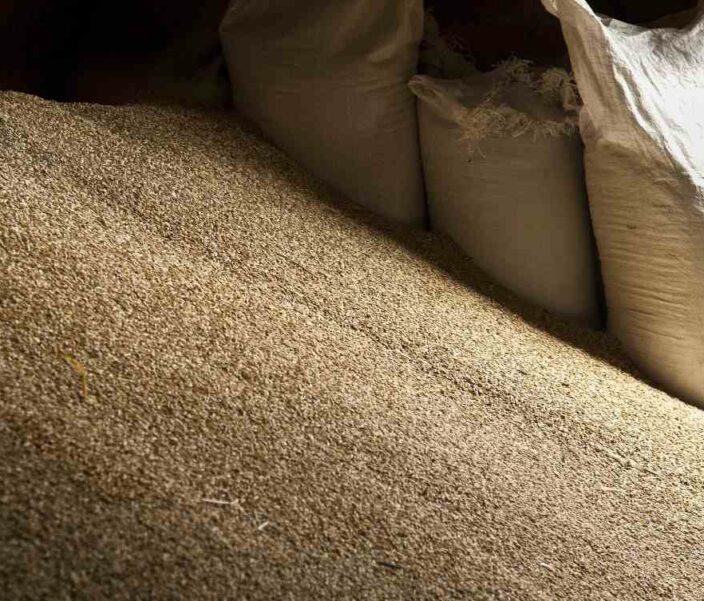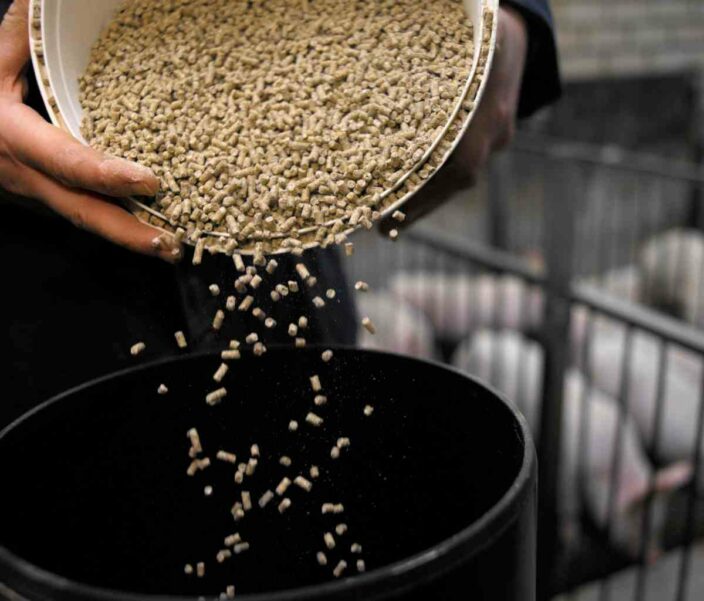By Josep Garcia-Sirera (Toxins product manager)
Classified as a toxin in the animal production industry, there are more than 150 different variants of LPS, a portion of gram-negative bacteria’s outer membrane. As bacteria are everywhere, this is not a feed safety issue but rather an on-farm issue. Gram-negative bacteria are naturally present in the gastrointestinal tract of swine, but under certain situations—bacterial overgrowth or when antibiotics are administered—endotoxins are released. Some controlling measures can be applied to feed to cope with this problem.
Endotoxins are produced in the gastrointestinal tract when there is an overgrowth of gram-negative bacteria. What makes gram-negative bacteria differ from gram-positive bacteria is the structure of the cell envelope. Gram-positive bacteria have a cytoplasmic and a peptidoglycan outer membrane. In addition to these layers, gram-negative bacteria have an outer layer. The outer layer contains phospholipids, proteins, and lipopolysaccharides (LPS). This LPS, also called endotoxin, consists of three elements: Lipid A (a hydrophobic component that serves as an anchor when a bacterium is invading a host cell), a core (an oligosaccharide), and O-antigen (a hydrophilic component projecting into the extracellular space).
Structure of LPS

The physiological activities of LPS are mediated mainly by the Lipid A component. Lipid A is a powerful biological response modifier that can stimulate the mammalian immune system. By stimulating localized or systemic inflammation (via the activation of receptors) additional oxidative stress occurs. The associated inflammation alters epithelial barrier integrity along with reduced nutrient absorption and utilization. Since Lipid A is embedded in the outer membrane of bacterial cells, it only exerts its toxic effects when the bacteria are lysed as a result of autolysis, ingestion and destruction by phagocytes, or killing with certain types of antibiotics.
Understanding the mode of action
The mechanism is complex. In humans, LPS binds to a lipid-binding protein (LBP) to create the LPS/LBP complex that eventually bind with Toll-like receptor-4 (TLR4). This triggers the signaling cascade for macrophage/endothelial cells to secrete pro-inflammatory cytokines and nitric oxide that lead to characteristic “endotoxic shock”.
The injection of live gram-negative bacteria, denatured gram-negative bacteria, or purified LPS into experimental animals causes a wide spectrum of nonspecific pathophysiological reactions including fever, changes in white blood cell counts, disseminated intravascular coagulation, hypotension, shock, and death. Injection of fairly small doses of endotoxin results in the death of most mammals. The sequence of events follows a regular pattern: (1) latent period; (2) physiological distress (diarrhea, prostration, shock); (3) death. How soon death occurs varies on the dose of the endotoxin, route of administration, and species of animal. Animals vary in their susceptibility to endotoxin.
Impact on swine
The effect on production that comes from exposure to endotoxins in swine is a consequence of three factors:
- The gastrointestinal barrier alters due to the inflammatory response. A study on the effects of endotoxins on the morphology of the gastrointestinal gut barrier showed that LPS decreased the height and area of intestinal villi, increased the width of the villi, and increased the depth and width of the intestinal glands. The authors concluded these effects contribute to decreased intestinal nutrient absorption and increased co-infection with other pathogens, leading to post-weaning diarrhea syndrome (Parra et al., 2011).
- Initiated by exposure to endotoxins, fever is mediated through the action of IL-6. Other symptoms that result from this multifactorial cause of fever include ear necrosis and lesions that lead to tail biting.
- With activation of the inflammatory system, there is a nutrient expense. As a result of inflammation, endotoxemia leads to a feverish state that results in reduced feed intake. This results in a lower feed conversion rate (FCR) and decreased growth performance.
Controlling Endotoxins
In general, strategies to control endotoxin contamination in animals are designed to limit bacterial contamination. These strategies include biosecurity, prebiotics, probiotics, improved nutrient digestibility, etc. Other strategies include vaccination, immunomodulation, and use of a toxin binder scientifically proven to target endotoxins.
Vaccination: Currently, immunization against Lipid A is under development but the high cost makes it a non-viable option for livestock production. Another option is to immunize against LBP. By neutralizing the reaction of the LPS/LBP complex, the cascade of events leading to pathogenesis can be reduced. This option is also expensive and is currently only applied for human use.
Immunity modulators: The use of immune modulators to compensate for the effects of endotoxins have been tested in animal production. An example of this immune-modulating action is found in B-glucans, present in some yeast cell walls, that can reduce LPS-induced inflammation, though it does not prevent inflammation.
Toxin binders: A more practical approach to reduce the absorption of endotoxins from the gastrointestinal tract is with toxin binders. Toxin binders are widely used to control other toxins, such as mycotoxins. The binder and the toxin form a complex too large to be absorbed into the blood system. The complex is then eliminated in the feces. Most mycotoxin binders are hydrophilic molecules (ex. bentonites, aluminosilicates) efficient at capturing polar molecules such as Aflatoxin. The capacity of these traditional mycotoxin binders to capture more lipophilic-like molecules such as LPS, zearalenone or DON is questionable.
Some preliminary studies tested the in vitro capacity of different toxic binders against endotoxins. A recent study by the University of Ghent, went beyond in vitro data and effectively proved the capacity of a toxin binder to capture endotoxins ex vivo, in the intestine of piglets. In the study, the authors compared the effect on the production of cytokines by injection of endotoxins with or without the addition of the toxin binder. The model was intestinal loops of live piglets.
Results

The data proved that the toxin binder is capable of reducing the cytokine production that results from endotoxin activation of the receptor.
Endotoxins have a wide variety of effects on livestock. Different means to control endotoxins have been tested but most of them are too expensive to be considered in animal production. A cost-effective method is the use of toxin binders to capture endotoxins in the gastrointestinal track and prevent them from entering the blood system. This binding approach stops endotoxins, not only at the gastrointestinal tract and blood stream, but also stops endotoxins from going airborne in the dust from feces.
Your Agrimprove Expert
THIS MIGHT ALSO INTEREST YOU
Ready for improvement? Try one of our suggested solutions with a proven added value.



